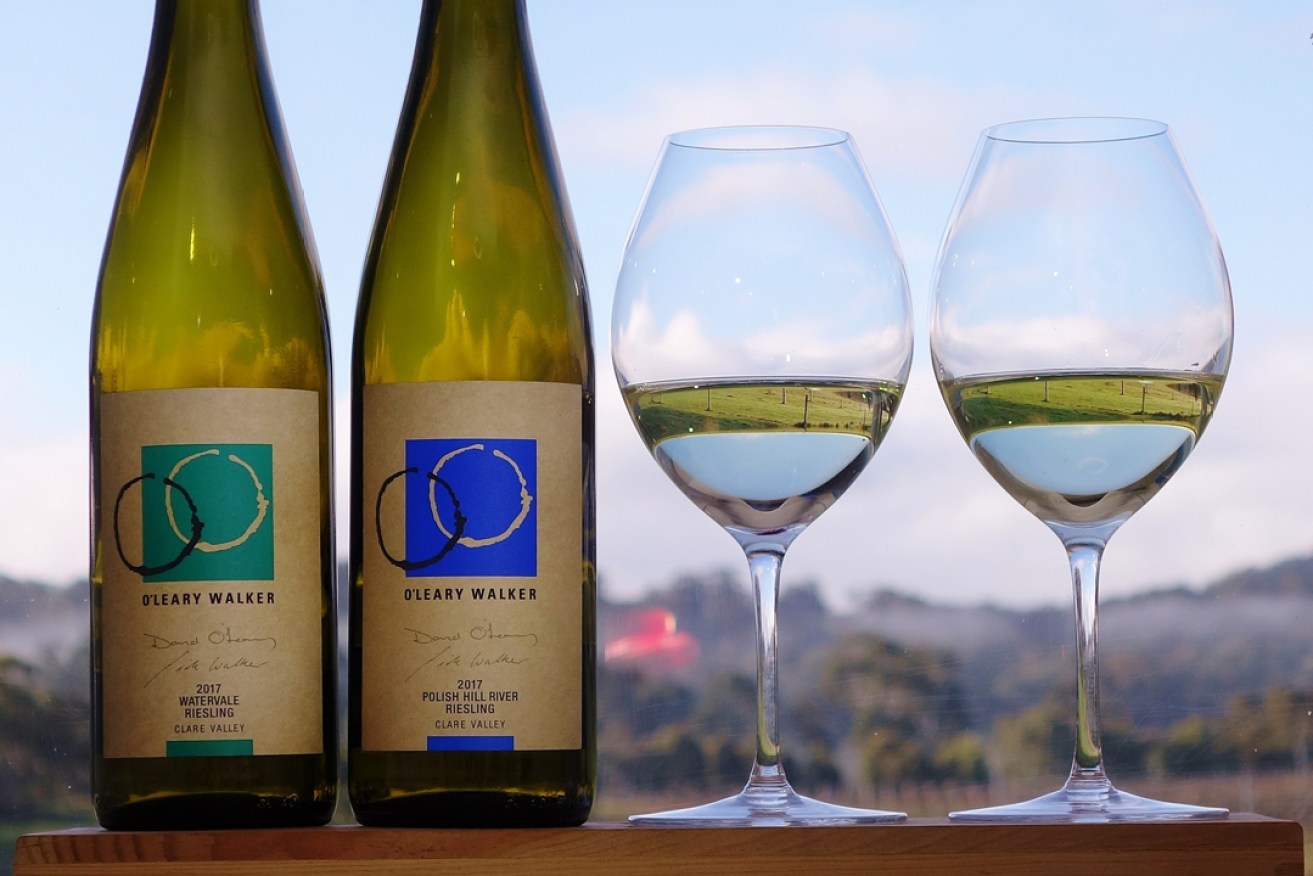A brace of Clare’s best
Whitey has a respectful frolic in the company of two future kings of Clare from O’Leary Walker.


There is much fascination in the way good Grenache varies in reflection of its particular site: the nature of the variety’s aromatic and flavour structure, even its texture, can vary more widely than most other varieties.
But every year there’s another handy release that begs comparison. This is the annual springtime emergence of the two king-hell Rieslings made by the Clare masters, David O’Leary and Nick Walker. These two wines always provide an informative tutorial, principally in how different geologies can grow wines of such individual distinction in the same region.
After that shocking weather that led to the harvest of 2017, I couldn’t wait to peel those new models when I found them at my door yesterday.
O’Leary Walker Watervale Clare Valley Riesling 2017 ($18.50; 12% alcohol; screw cap) grows in the chalky calcrete of Watervale, on the wondrous slope – which I mischievously call the Côtes des Blancs – opposite the winery. The lime pith typical of the best Clare Riesling is immediately evident. Combined with a more fleshy aroma, like the crushed petals of the same fruit’s little flowers, and maybe a faint insinuation of lightly-smoked ham. It’s intense and tight in this its infancy: royal and composed while exuding commanding authority.
A few kilometres to the north-east across the range is the headland of the erratic stream rather glamorously called the Polish Hill River. After a huge freak rain, I once saw it actually flow, from the vicinity of the little Polish Church down onto the plain to the north, where it simply fizzles out into the salty alluvium toward Burra.
But here, in the much older schists and slatey mudstones of that miserable dribble’s headland, lies the famous Polish Hill River vineyard.
The O’Leary Walker Polish Hill River Clare Valley Riesling 2017 ($25; 12.5% alcohol; screw cap) has that same citrus hallmark and authority. But here the petals seem fatter, like the lush creamy flesh of the magnolia blossom. This is a difference that simply magnifies as the wines matures.
Sometimes this one seems to be a bee’s dick closer to tangelo than lime; in some years that citrus also has a tropical lychee/rambutan insinuation.
It is the next layer down where the geologies really speak. Being a rock-licker from way back, I admit to having an expectation of this point of difference, but with this strange year of storms and tempests the gap is even more marked than usual. I’m sure that even those organoleptically disenfranchised souls who’ve never licked chalk or siltstone will see this difference. It’s not magic.
While the Watervale wine to me smells like damp chalk beneath its primary fruit, the Polish Hill River is more like the bouquet of a bluestone cottage wall rainwet and steaming after a sudden summer thunderstorm. It’s more acrid and somehow senior, and provides a more substantial support for those fleshy citrus wafts.
Textually, the contrast grows. The Watervale chalk is austere and as dry as ground bone china, and as the bouquet suggests is very tight and taut. It stalks, walking as tall and solitary as Charles de Gaulle following JFK’s caisson up that bleak avenue. Now there was a figure.
The Polish Hill River wine, while more sensual, seems a little more grainy and even muddy in texture. It makes me wonder whether Petticoat Tail could make a Scottish shortbread flavoured with tangelo juice.
While equally regal, the wine has a touch more rambunction. To push this male anthropomorphising royalty thing, this tricky year made it more Harry than Wills.
Both will be kings.
I have never quite grasped how these bony old hills on the edge of one the flattest, most arid, sunburnt places on Earth can grow this variety from the northernmost extreme of viable viticulture on the snowy slopes of Germany. It’s confounding.
But yesterday, when reading that Alsace is pretty much the sunniest bit of continental France, it began to make sense after 40 years of wonderment. While “ze border goes back and forth like a madwoman’s accordion” this Germanic corner of France grows magnificent Riesling on geologies as varied as Clare’s. Sure, it snows in Alsace, but they have chalks and schisty siltstones in similar proximity, and wines as regal and dignified, as similar but contrasting as these two majesties.
It will be a great education, watching these two get past this, their awkward gawky youth, and gradually lean into their royal traces. It would be a grand adventure to sit down to a bottle of each every spring for the next 20 years.
I’ve never made shortbread, but I’m tempted to try my tangelo dreaming for the Polish Hill River. Right now, little would better accompany the Watervale version than a stack of Coffin Bay oysters so fresh they wince when you hit ’em with the lemon.
drinkster.blogspot.com




